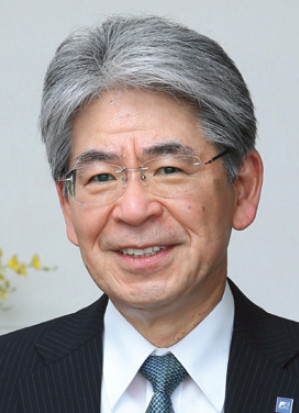Tatsuhiko Fujihira
Biography
David James Coe, Gerald Deboy, and Tatsuhiko Fujihira are the inventors of the superjunction principle, which has delivered immense energy savings around the world since its introduction. It’s the most creative and important concept in the power device field since the insulated gate bipolar transistor of the 1980s and—thanks to the leadership of Coe, Deboy and Fujihira—it is now the leading technology in the power device field. Superjunction challenged, and ultimately overturned, the widely accepted limit of silicon in high-voltage devices. Indeed, superjunction enabled a decrease in specific on-state resistance by an order of magnitude compared to conventional techniques that has led to an energy savings revolution. It began with Coe’s seminal patents, in 1982 and 1988, which described for the first time the use of compensated alternate n/p stripes/pillars in a drift region of a power device to eliminate the tradeoff between on-state resistance and breakdown voltage (known as the limit of silicon). A decade later, in 1998, Infineon Technologies released the CoolMOS, which was developed under the leadership of Deboy. This was the first commercial product based on the superjunction concept and it was a breakthrough, bringing massive power-loss cuts (up to 5x) and an equally impressive increase in energy efficiency in power systems where it was employed. CoolMOS also drove further progress by superjunction in the field of power devices. In 1997, his culminated in work by Fujihira that superjunction devices need no longer obey the silicon limit and could bring their benefits into new territory, beating the theoretical limit of silicon by two orders of magnitude. Fujihira was the first to show that superjunction is not subject to the 1D Poisson equation but is based on a two-dimensional effect of the electric field. In fact, Fujihira coined the term “superjunction” in 1997 and owns the first publication of the superjunction concept. Superjunction MOSFETs are now the norm in high-voltage switching converters and the energy savings that superjunction devices have brought in a wide array of applications—from laptops to EV charging stations—are tremendous, estimated at over 3.4 trillion kWh to date. The superjunction concept will undoubtedly continue to play a transformational role in environmental and safety technologies in generations to come.
An IEEE Member, Tatsuhiko Fujihira was chief technology officer for electronic devices and, as of February 2023, is a Fellow within Fuji Electric, Matsumoto, Japan.
